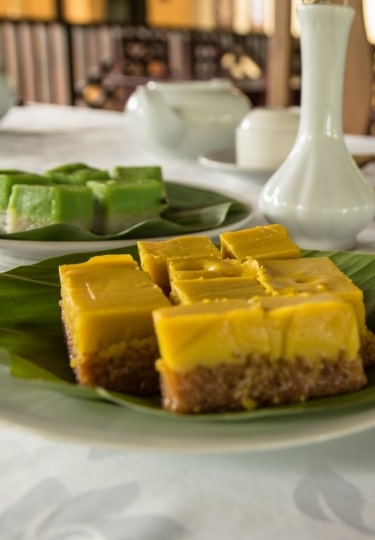The list of what to eat in Kuala Lumpur is practically endless, and the opportunities to do so throughout the day are many. In between breakfast, lunch, and dinner, locals stop for frequent snacks or sweets.
It helps that in the Malaysian capital, you’re almost always in proximity to something delicious. Malaysia’s diverse population, as well as its historical importance as a center of trade in Southeast Asia, means that the cuisine here is incredibly varied and complex.
Kuala Lumpur food includes everything from traditional Malay dishes to southern Chinese specialties to recipes originally from India. Come hungry and prepared to try as many dishes as possible during your stay. Here are just a few traditional specialties worth seeking out.
Nasi Lemak
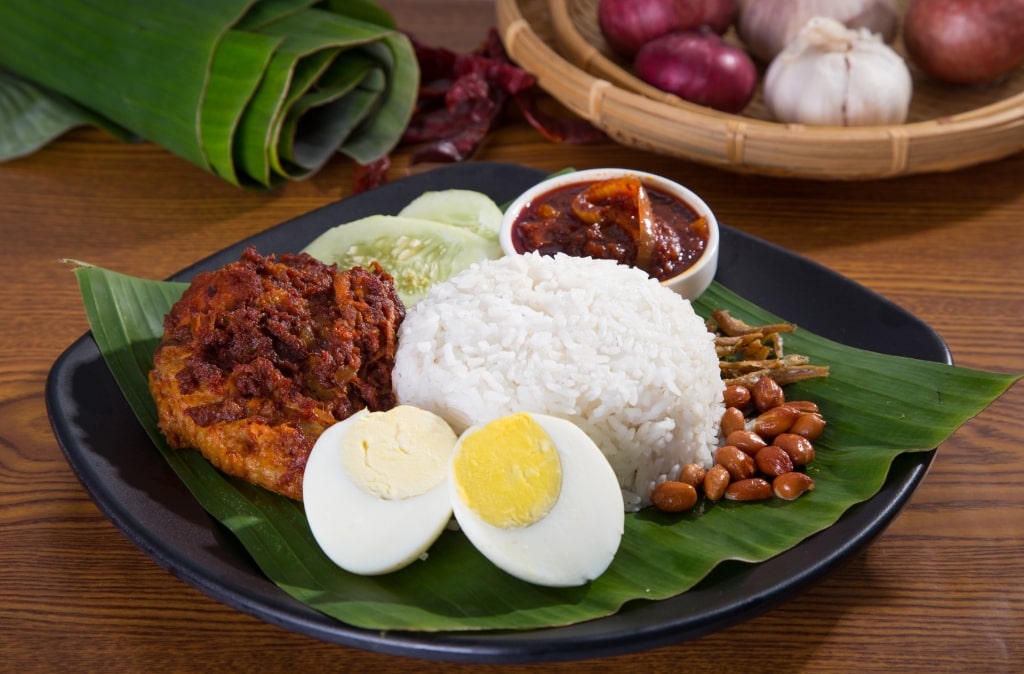
Nasi lemak
Perfect for breakfast or lunch, nasi lemak is the national dish of Malaysia—no small distinction in such a food-obsessed country.
At its most elemental, the dish consists of a molded mound of rice with an assortment of toppings. That might sound simple, but this is one case where the details matter tremendously.
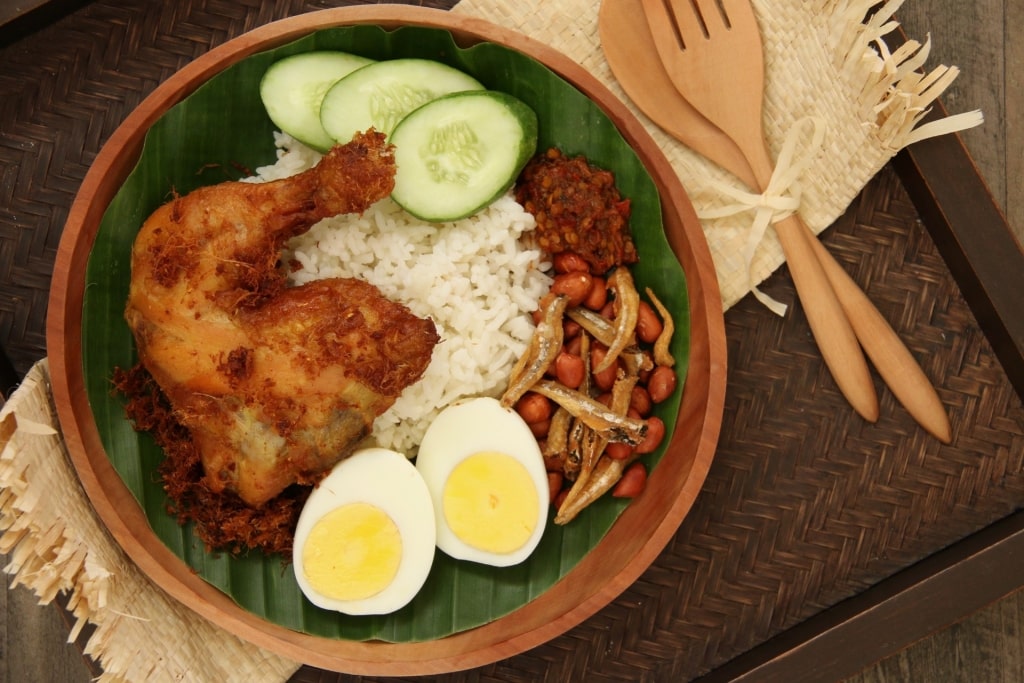
Nasi lemak
The rice is steamed in coconut milk perfumed with pandan leaves, which leave each grain infused with flavor.
Crispy fried anchovies are a common accompaniment, as are fried, salted peanuts, sliced cucumbers, a hard-boiled egg, and a sambal made with fermented shrimp and chiles. The result encompasses a broad spectrum of salty, sweet, savory, and spicy flavors on a single plate.
Read: Best Things to Do in Kuala Lumpur
Char Kuey Teow
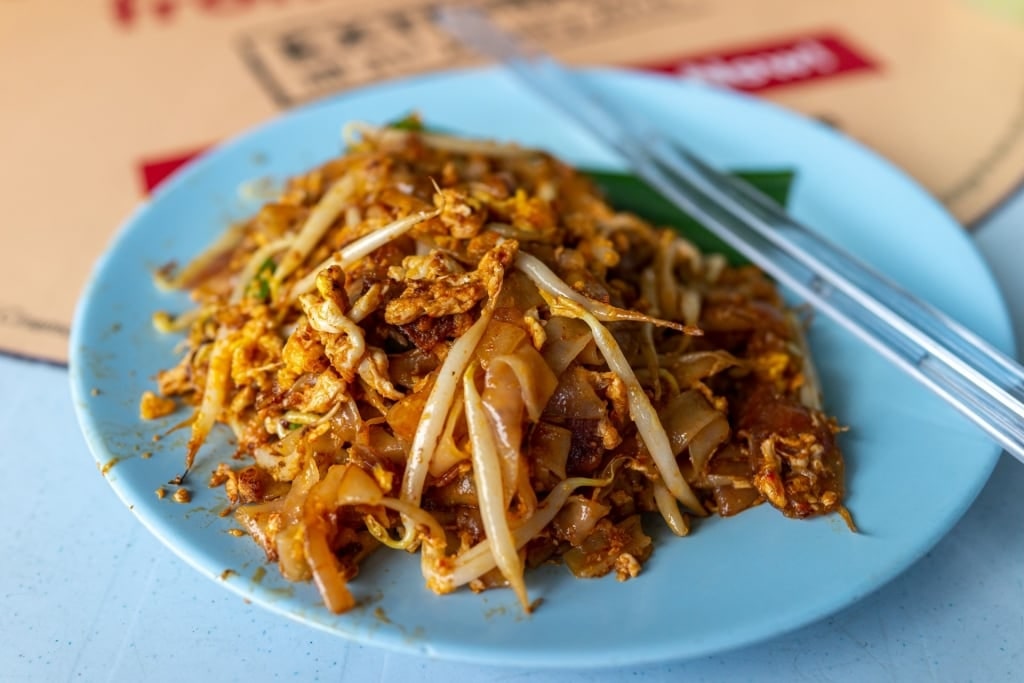
Char kuey teow
Malaysia is known for this incredibly popular stir-fry, which should be at the top of every gastronaut’s to-do list in Kuala Lumpur. Virtually every collection of hawker stalls will feature one or more vendors whipping up these toothsome rice noodles in a blazing-hot wok set over a fiery inferno.
The live fire adds a distinctive char and a smoky undertone known as wok hei that forms an essential component of the flavor profile of char kuey teow.
A generous splash of sauce made from dark and light soy sauce, as well as oyster sauce and kecap manis, or sweet soy sauce, caramelizes with the intense heat and adds a powerful hit of umami.
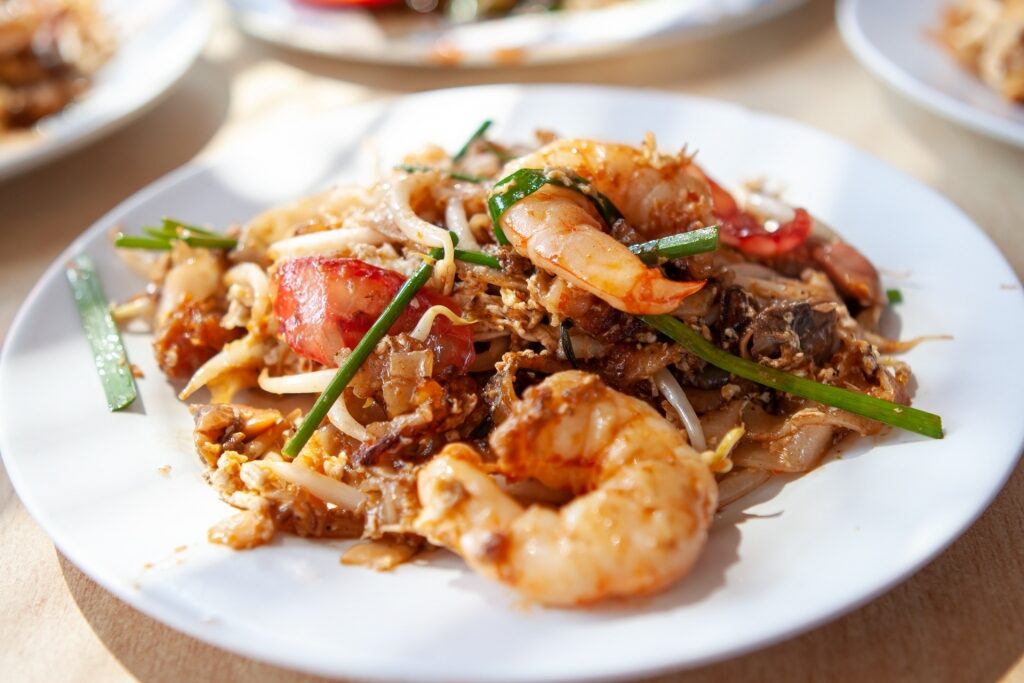
Char kuey teow
While those basic building blocks of the dish are fairly consistent, the actual ingredients in char kuey teow can vary quite a bit depending on the cook.
Scrambled egg, garlic chives, and bean sprouts are essential, as is lup chong, a kind of sweet, cured Chinese sausage. Prawns are another common addition, although fish cakes, cockles, squid, and other seafood may also make appearances.
Kaya Toast
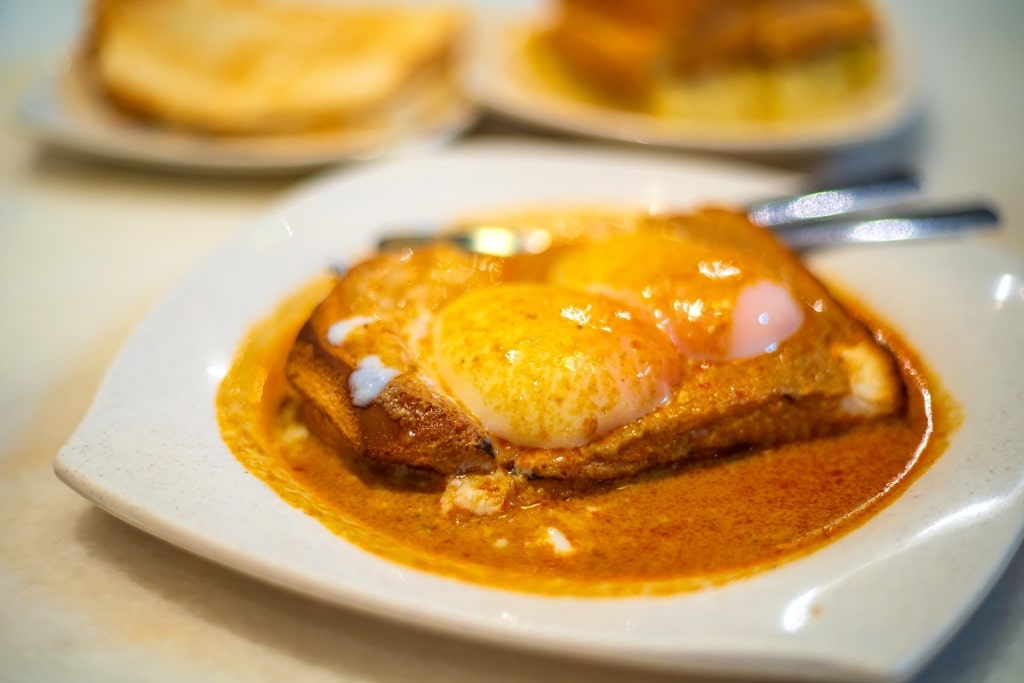
Kaya toast
There’s no better start to the day in Kuala Lumpur than a cup of strong, sweet coffee with a side of kaya toast.
Popular as a breakfast or snack throughout Malaysia and Singapore, this treat consists of a thick slice of fluffy milk bread topped with a generous slick of butter or margarine.
On top of that comes kaya, a sugary, slow-cooked coconut jam. It often comes with a pale green tint thanks to pandan leaves, which also add an intense fragrance reminiscent of vanilla and pine.
Hokkien Mee
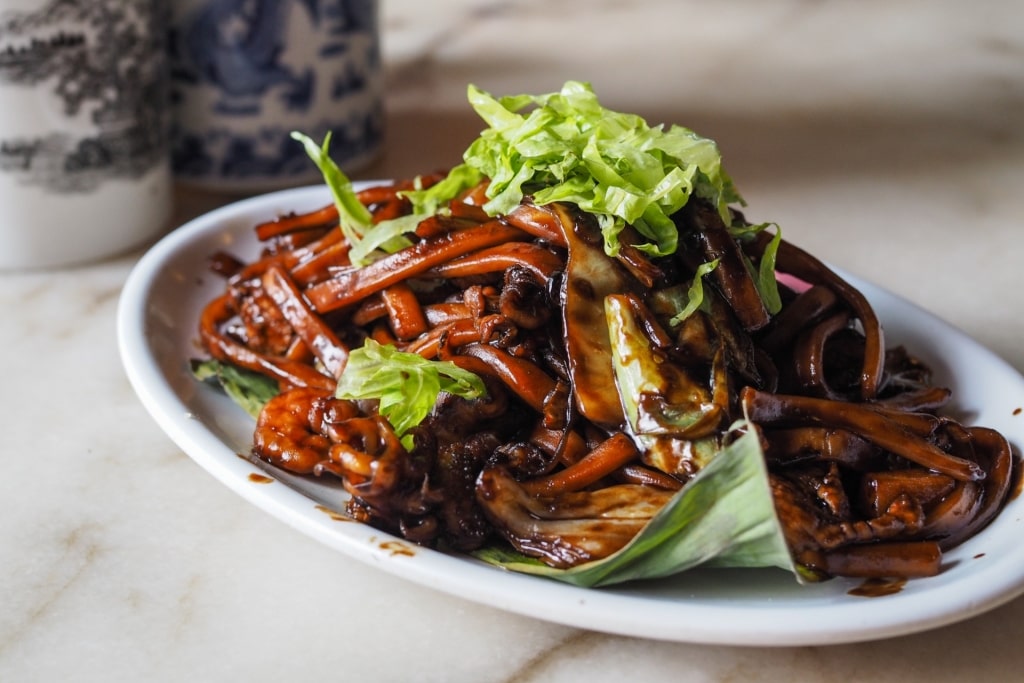
Hokkien mee
Literally translated simply as “Hokkien noodles,” this dish made its way to Malaysia by way of immigrants from Fujian province, China.
Interestingly, the name refers to a fairly broad range of noodle dishes and ordering Hokkien mee will get you very different results depending on your geographic location.
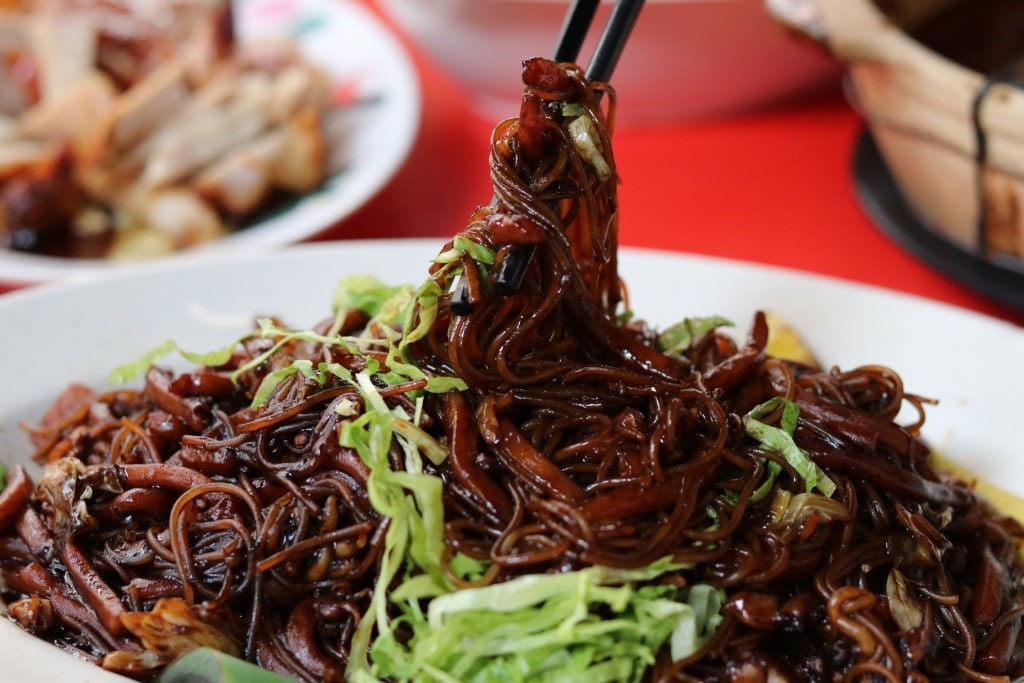
Hokkien mee
Locals in Kuala Lumpur have their own spin on Hokkien mee, which comes with a tangle of fat yellow noodles fried in lard with a generous dash of dark soy sauce. Supposedly, this iteration was invented by a hawker on KL’s famous Petaling Street in the main section of Chinatown in 1927.
Fish cakes, squid, cabbage, and pork are all typical toppings. The most delicious part comes from the small cubes of fatty pork that render and pick up crackly, charred eggs in the heat of the wok.
Nasi Kandar
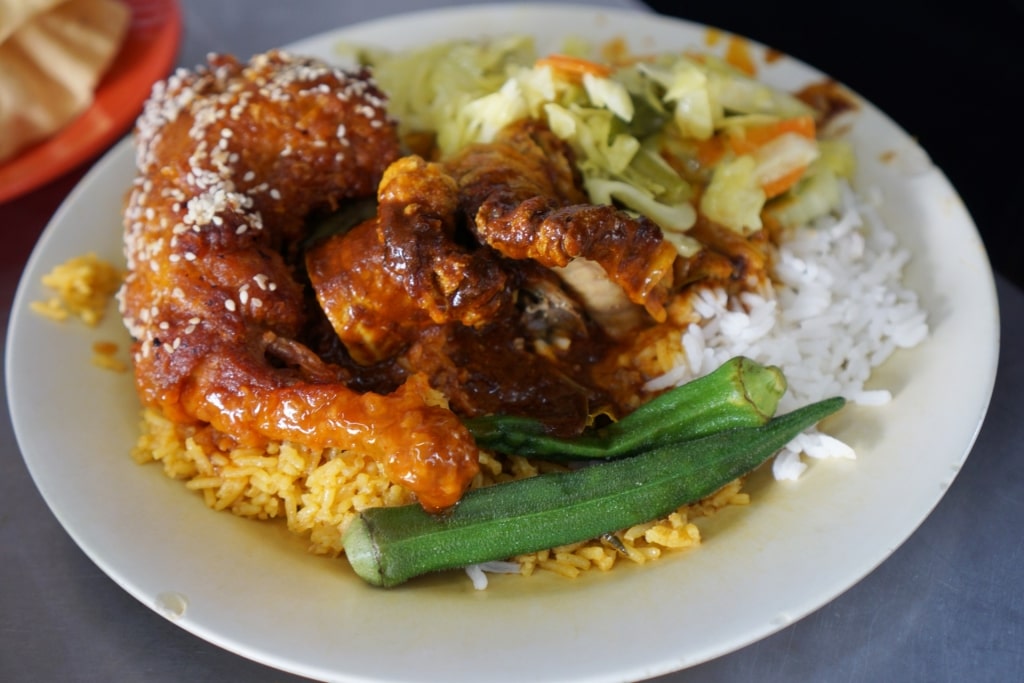
Nasi kandar
When you find yourself looking for a fast, affordable meal, search no further than the nearest nasi kandar vendor. The term stands for rice with a wide assortment of curries, almost all of which come with rich, savory gravies.
Tamil Muslims from India brought the concept over to Malaysia, where it quickly caught on as the de facto working man’s lunch. It’s especially common on the island of Penang, but locals in Kuala Lumpur are equally fond of it.
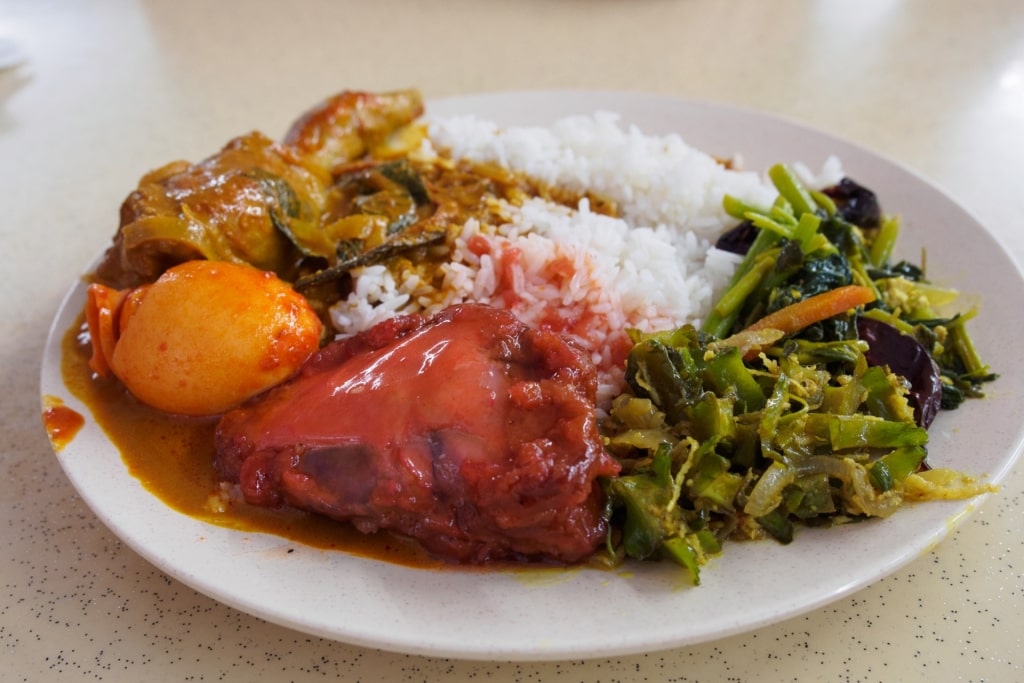
Nasi kandar
Nasi kandar is, in many ways, also a perfect meal for travelers. It doesn’t matter if you’re unsure of the names of individual dishes—simply point to what looks good and watch as it’s ladled onto your plate of rice.
Most places offer an assortment of vegetarian, meat, and seafood curries, meaning it’s easy to tailor your plate to individual dietary preferences.
Satay
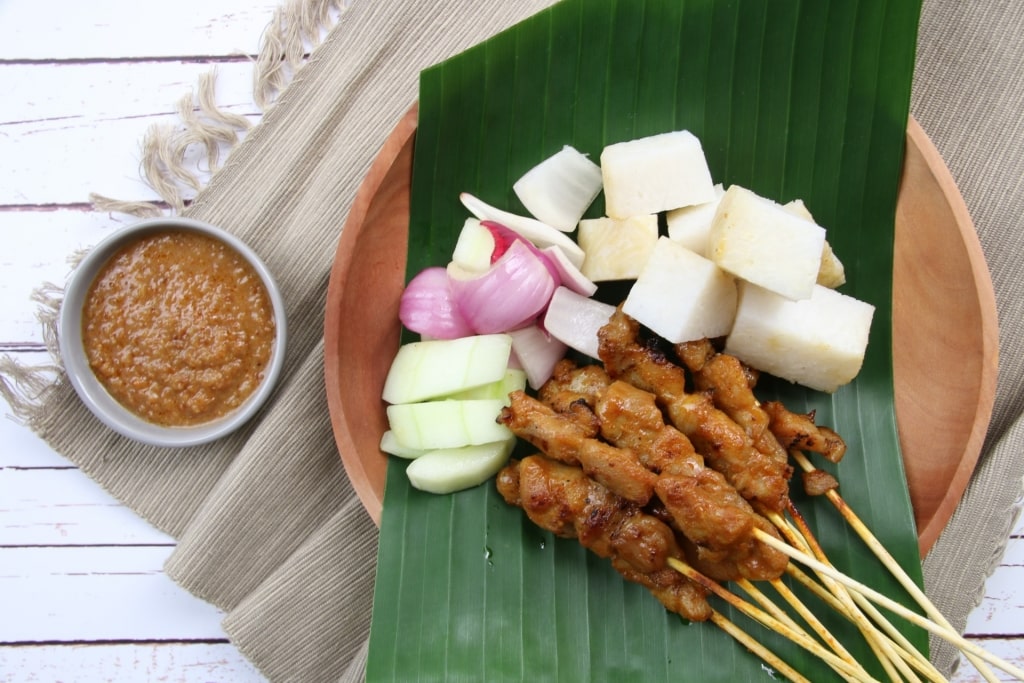
Satay
Simple, addictive, and widely available, satay is a favorite Kuala Lumpur food. This dish consists of skewers of marinated meat grilled over hot coals until lightly charred.
Chicken, beef, and lamb are all common choices and pair sensationally with a lightly spicy peanut sauce for dipping.
Although the dish is about as simple as it gets when it comes to street food, many hawkers put their own distinctive twists on it by adjusting the marinade. Satay often has just a hint of sweetness, as well as herbaceous elements and a faint golden tinge from turmeric.
Cendol
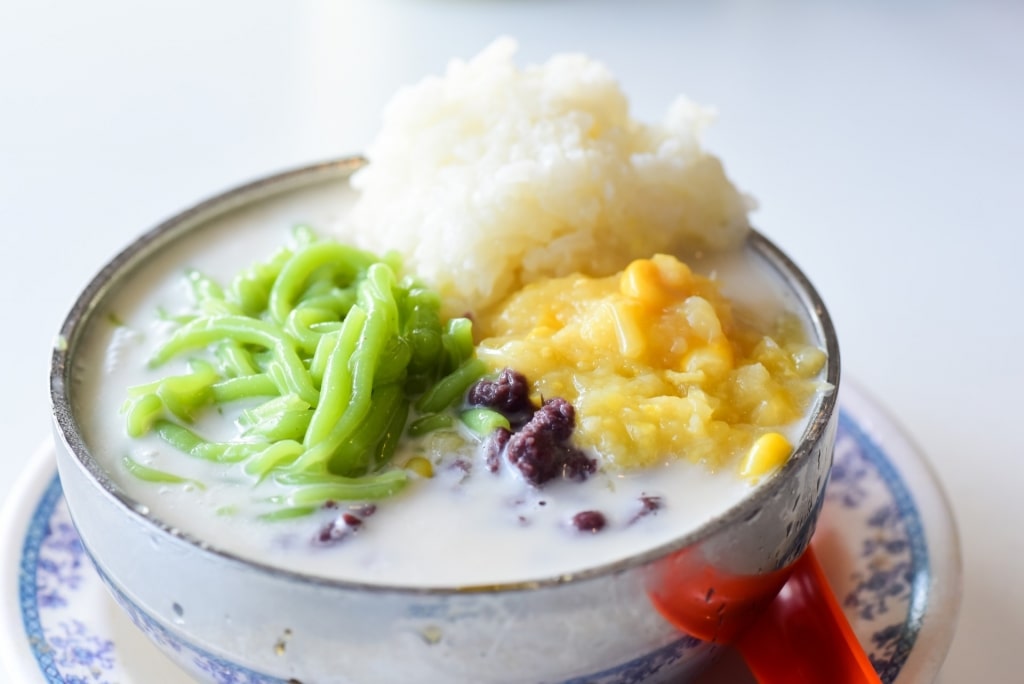
Cendol
At first glance, cendol looks like a soup of green spaghetti. These emerald squiggles, however, are actually rice flour jellies flavored and colored with pandan.
Served in an ice-cold coconut broth sweetened with palm sugar, cendol makes for an incredibly refreshing dessert. It’s perfect for Kuala Lumpur’s tropical climate, which often leads to high temperatures and even higher humidity.
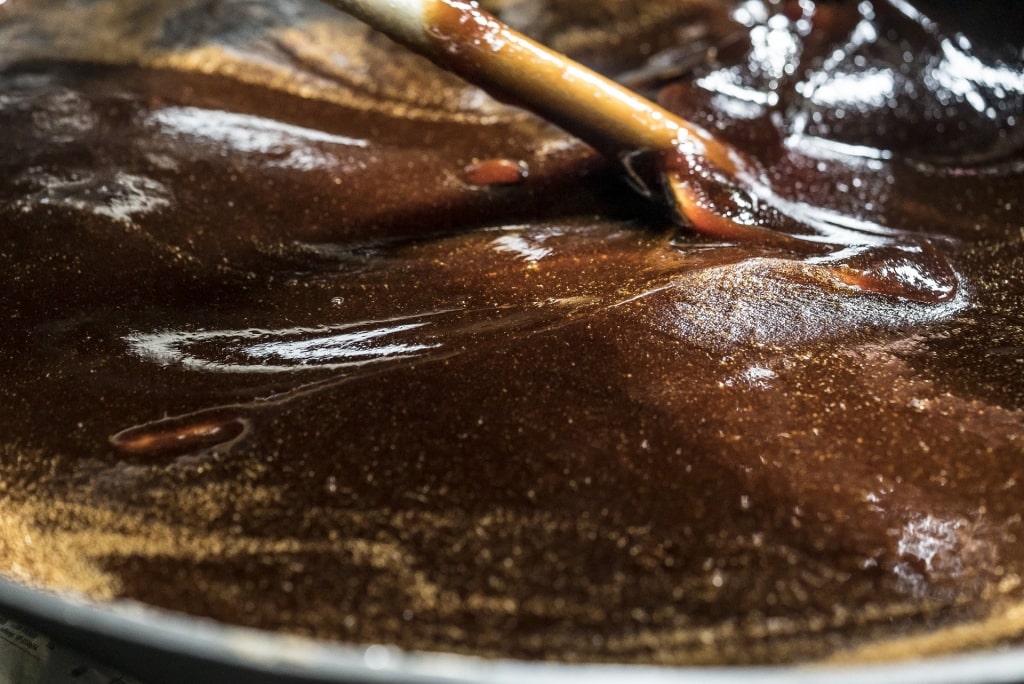
Gula melaka
All sorts of toppings can be added, including corn kernels, sweetened red beans, tapioca pearls, and wiggly jellies. Especially in Malaysia, gula melaka, a rich, brown syrup derived from palm sugar, is a decadent addition.
Rendang
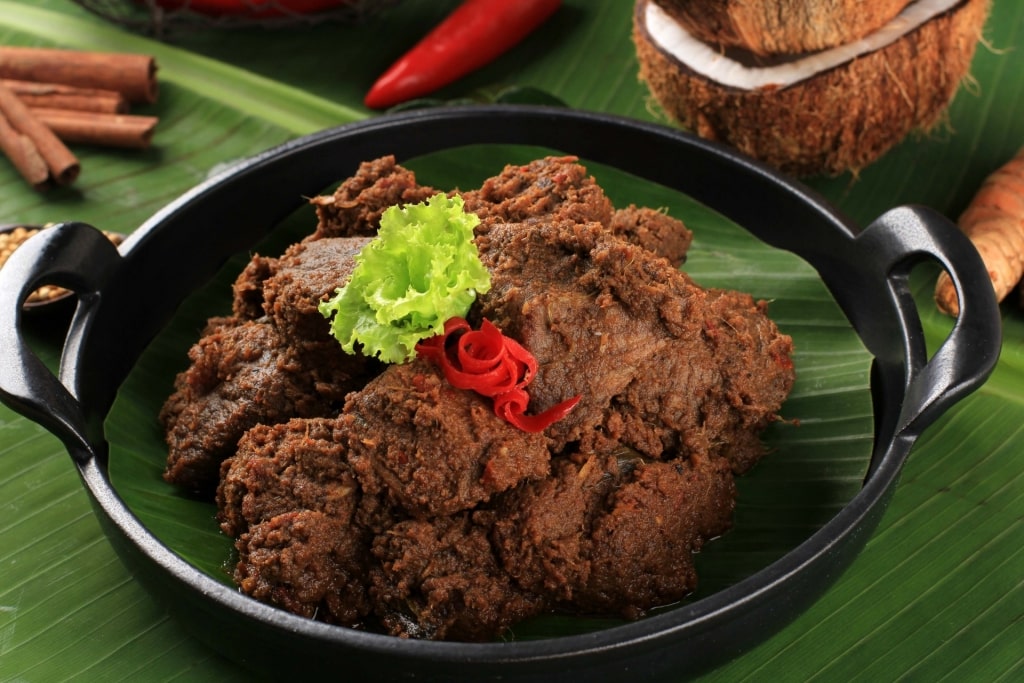
Rendang
Although it originally hails from West Sumatra in Indonesia, this luxuriously flavored beef dish is equally popular throughout Malaysia and Singapore. If you’re struggling to decide what to eat in Kuala Lumpur, make it rendang, as it will never taste as good outside of Malaysia.
What sets rendang apart is the texture of the meat and the particular technique used to produce it. A proper rendang starts by braising a fatty cut of beef—lamb, chicken, or other meats can occasionally stand in—in coconut milk with an intensely potent spice paste for hours.
As the liquid reduces, the oil in the coconut milk separates out. In the final stage, the already-tender beef fries in the fat, creating additional caramelization, before being finished with toasted coconut.
Bak Kut Teh
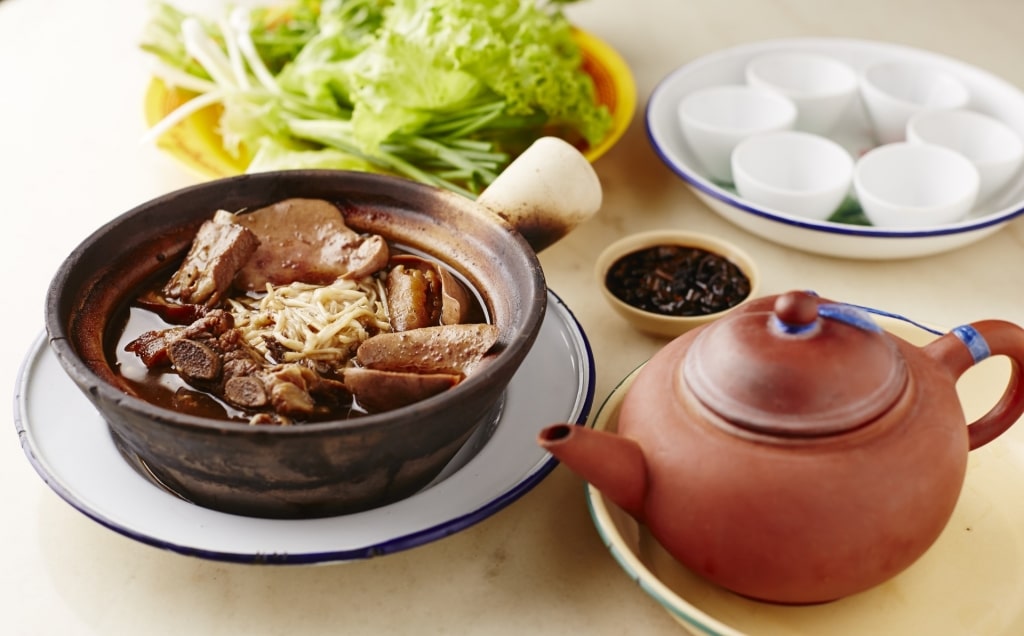
Bak kut teh
With its roots in the Teochew and Hoklo communities, this intensely savory dish is beloved throughout Malaysia, as well as in neighboring Singapore.
Soulful, indulgent, and incredibly rich, bak kut teh, which translates roughly to “meat bone tea” in Hokkien dialect, consists of pork ribs braised with garlic, fennel seeds, cinnamon, star anise, and other spices for hours until the collagen practically melts.
The finished dish is peak comfort food and full of the sorts of flavors that only come through slow cooking. As the broth reduces, it emulsifies with the liquid fat to create a sauce that clings to the meat. It pairs perfectly with a mound of fluffy white rice.
Rojak
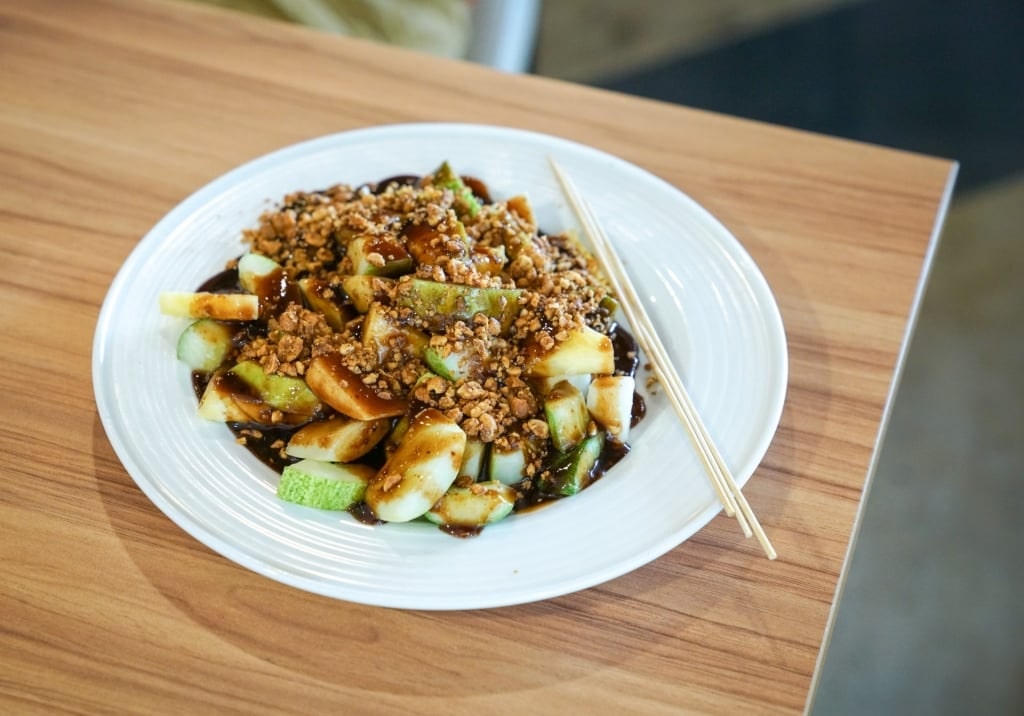
Rojak
If you’re searching for a refreshing snack on a hot afternoon in the Malaysian capital, look no further. This crunchy, tangy, spicy, and sweet salad can include all sorts of fruits and vegetables.
The term “rojak” comes from Malay slang for an “eclectic mix.” It’s an apt description for a dish that can contain dozens of disparate elements.
Fruits including pineapples, rose apples, green mangoes, and papaya are common, as are vegetables such as cucumbers, bean sprouts, or even blanched water spinach. What binds it all together is a slightly funky, sour dressing with tamarind.
Roti Canai
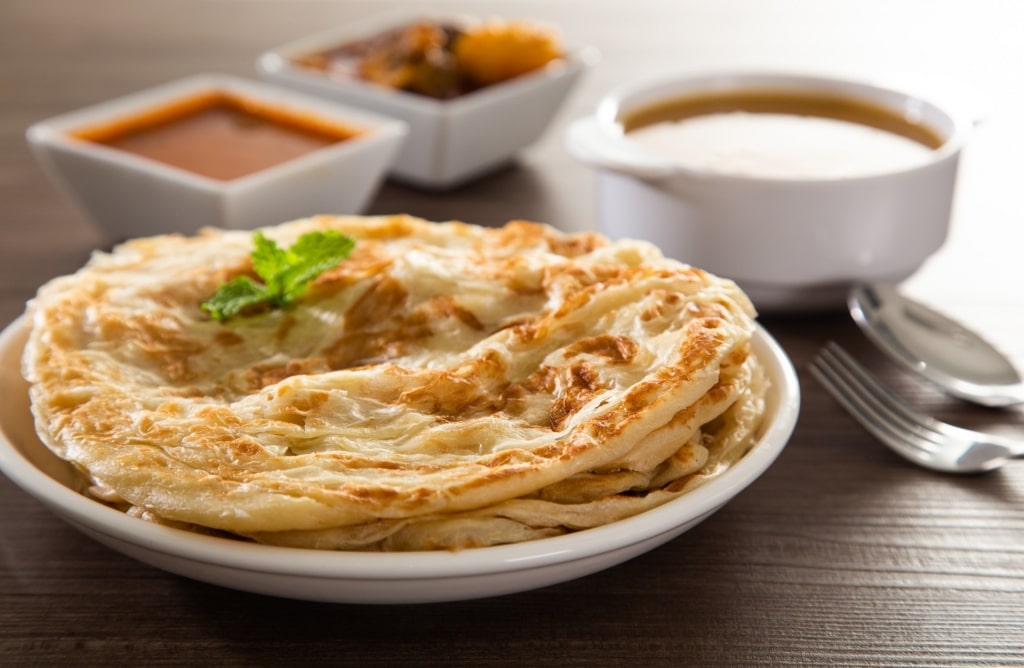
Roti canai
This flaky flatbread is the perfect accompaniment to all sorts of saucy, soupy dishes and stews. Roti canai made its way from the Indian subcontinent to Southeast Asia and quickly became an integral part of the cuisine.
Layers of fat—usually butter or margarine—within the dough make for an exceptional tender crumb that pulls apart with a little puff of steam in your fingertips.
Roti can be either savory or sweet. Roti pisang comes with the same buttery, lightly pan-fried exterior, but drizzled with syrupy condensed milk.
Ayam Masak Lemak
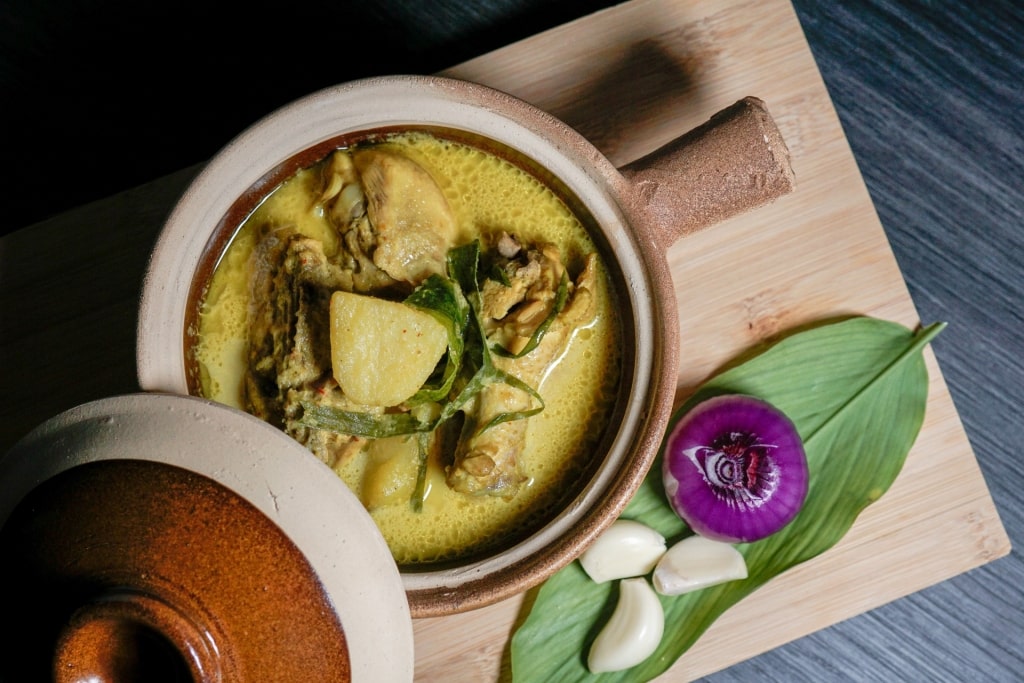
Ayam masak lemak
With its sunny hue from turmeric and its delicate blend of spices, this Malaysian-style coconut curry is a pleasure to eat. The words masak lemak essentially mean “cooked” and “creamy,” in reference to the sauce.
Ayam, or chicken, is the most popular main ingredient in masak lemak and usually comes bone-in, skin-on for the best texture.
While the individual spices and ingredients vary, most renditions come with an aromatic blend of lemongrass, galangal, garlic, ginger, makrut lime leaves, and a generous helping of bird’s eye chilies.
Steamed rice is essential for soaking up the coconut gravy, as well as for taming the sometimes considerable heat.
Wantan Mee
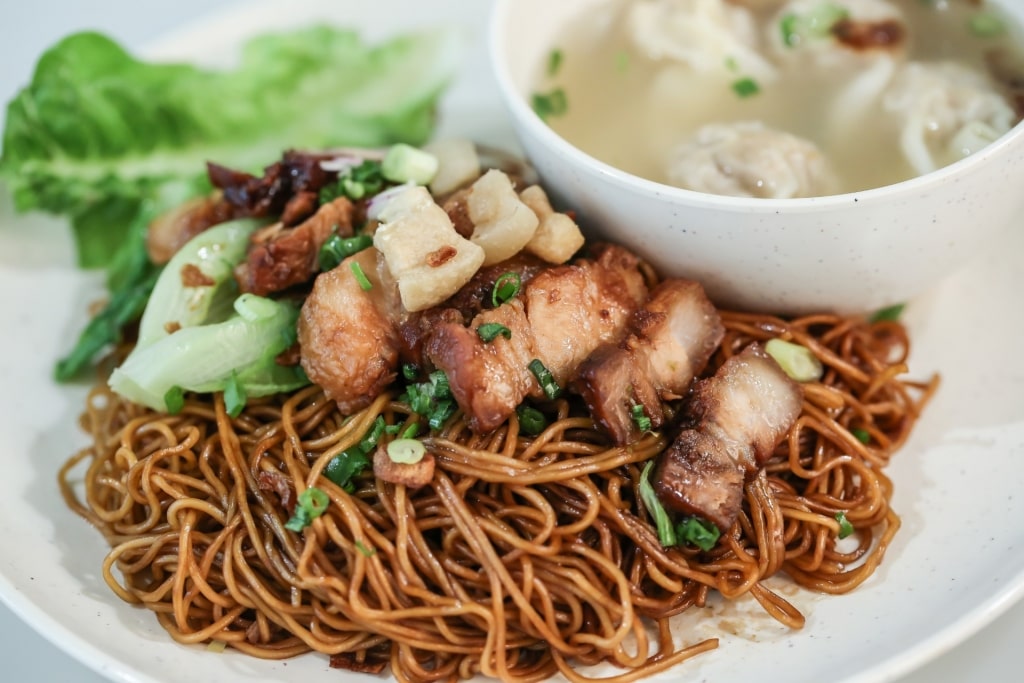
Wantan mee
Originally from southern China, this noodle dish is a popular street food staple from Thailand to Singapore. In Kuala Lumpur, locals fiercely debate who serves the best version.
The most famous wantan—or wonton—mee stands and shops have been in the same families for generations.
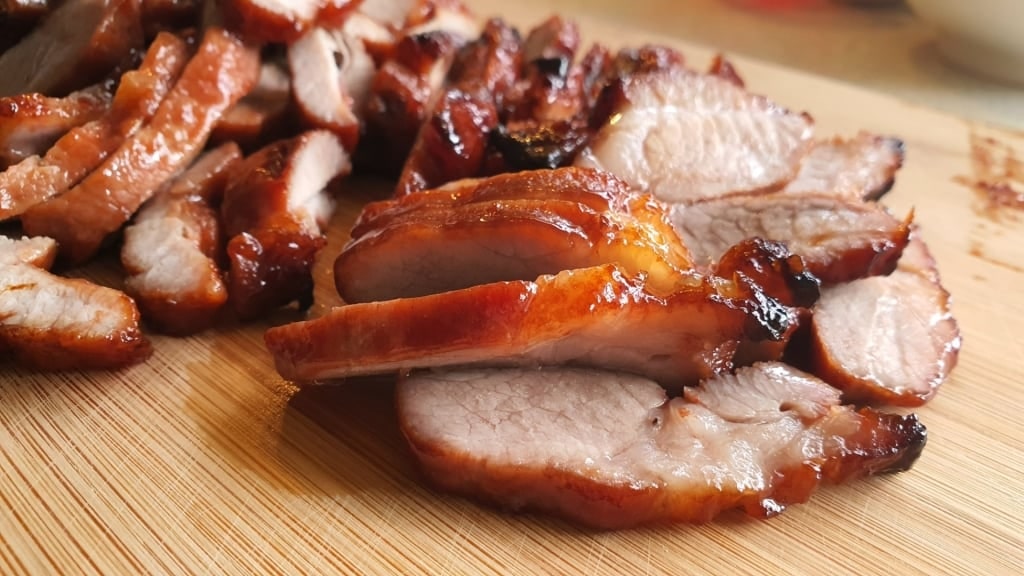
Char siu
Essentially, the dish consists of a plate of skinny, school bus-yellow egg noodles topped with sliced char siu, or roast pork, as well as pork wontons, and some sort of blanched green, such as gai lan , bok choy, or choy sum.
Throughout the Chinese diaspora, the dish can come either “dry” or with broth as a noodle soup. Either way, it gets a real boost from condiments such as pickled bird’s eye chiles in vinegar, soy sauce, or fish sauce.
Kek Lapis Sarawak
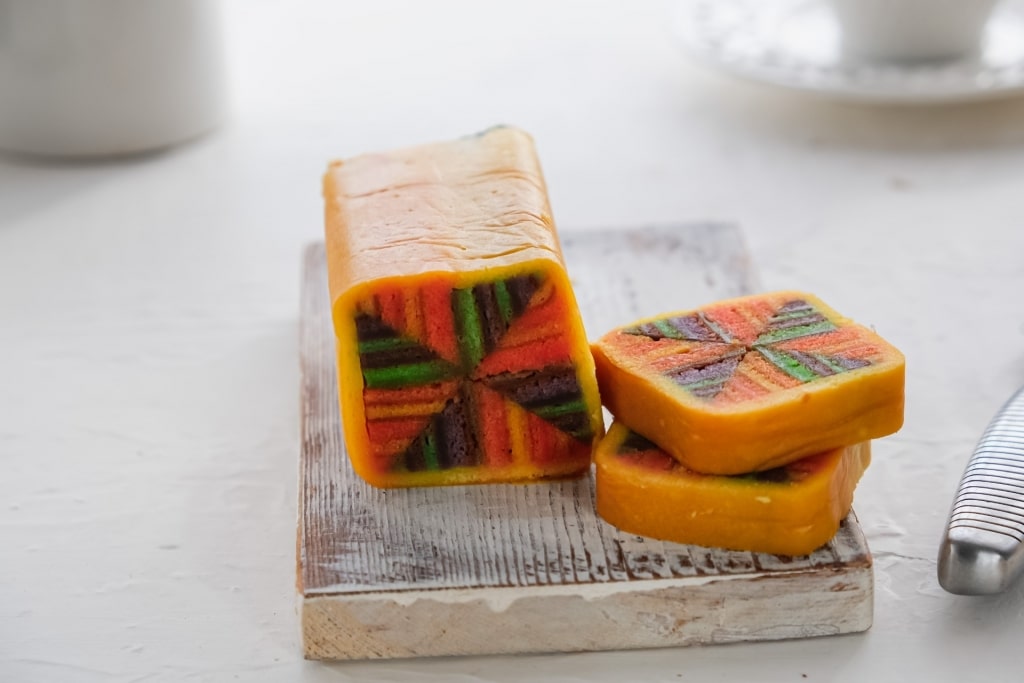
Kek lapis sarawak
There are many excellent desserts and bakeries around Kuala Lumpur. One of the most iconic Malaysian desserts hails from Sarawak and looks like a masterpiece of modern art.
Kek lapis Sarawak consists of dozens of thin cake layers stacked on top of one another. Most culinary historians believe that the dish was invented in part due to Dutch colonists in Indonesia, although the exact origins are disputed.
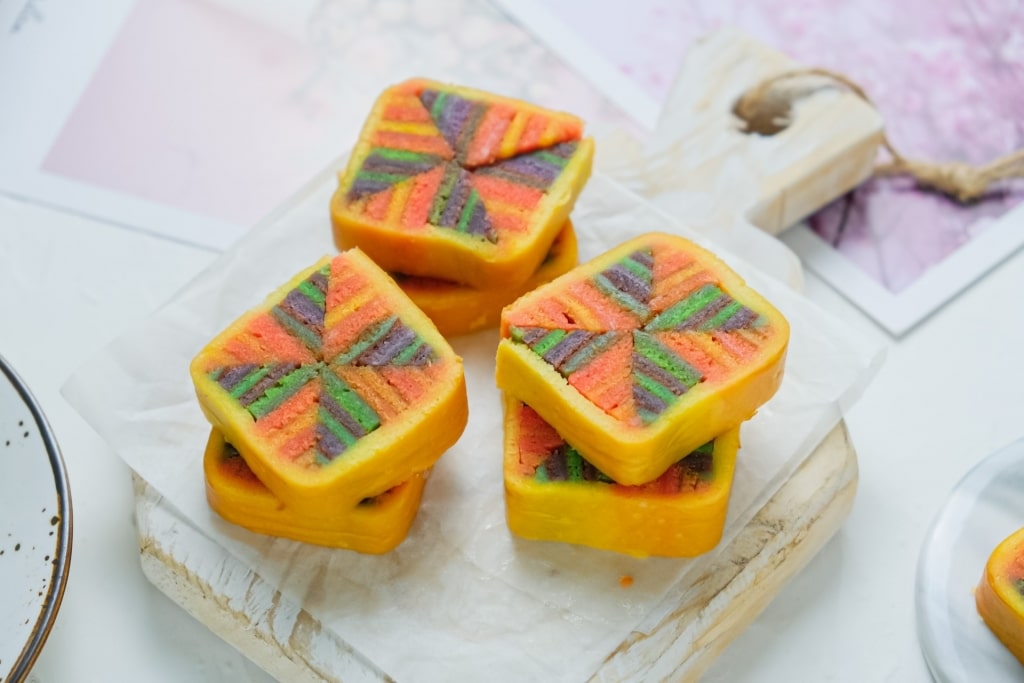
Kek lapis sarawak
It’s a similar cooking technique to German Baumkuchen (“tree cake”), Czech trdelník, and other European cakes made by brushing layers of batter onto a rotating spit, allowing each one to quickly cook before adding the next.
Regardless of who invented it, kek lapis is a true treat. Each individual cake layer picks up a hint of caramelization, giving the whole cake a slightly toasty undertone.
Malaysian bakers over the years have built on the formula, adding brilliant colors and local flavors like pandan. And while kek lapis is wonderful fresh, it has the added bonus that it travels well.
Yong Tau Foo
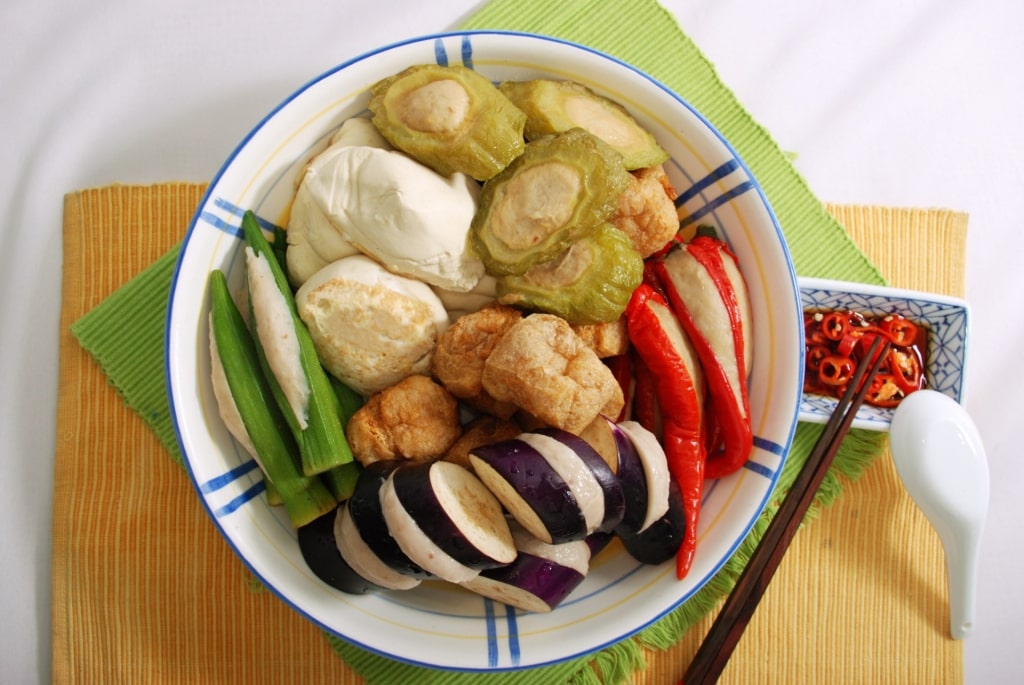
Yong tau foo
Originally brought over by Hakka Chinese immigrants, yong tau foo has been thoroughly embraced in Southeast Asian cuisine, albeit in various forms.
The dish traditionally refers to tofu stuffed with highly seasoned ground meat, but plenty of hawkers have put their own twists on it over the years.
Some use a form of fish mousse instead of pork, or opt for a vegetarian version. Yong tau foo can be served plain, fried, or even in a savory soup.
Banana Leaf Rice
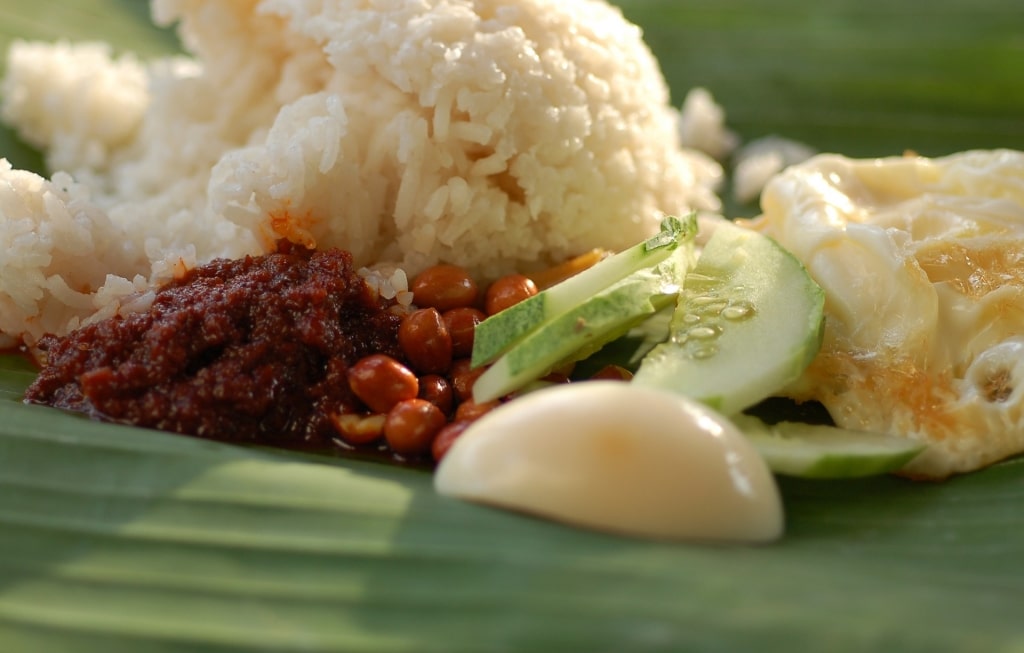
Banana leaf rice
Banana leaf rice usually refers to a whole feast of dishes, all laid out neatly around a mound of rice piled on a banana leaf. The tradition came to Malaysia by way of South India and makes for an especially festive, convivial form of communal dining.
Offerings vary, but tend to include an array of creamy, coconut curries and savory relishes or salads.
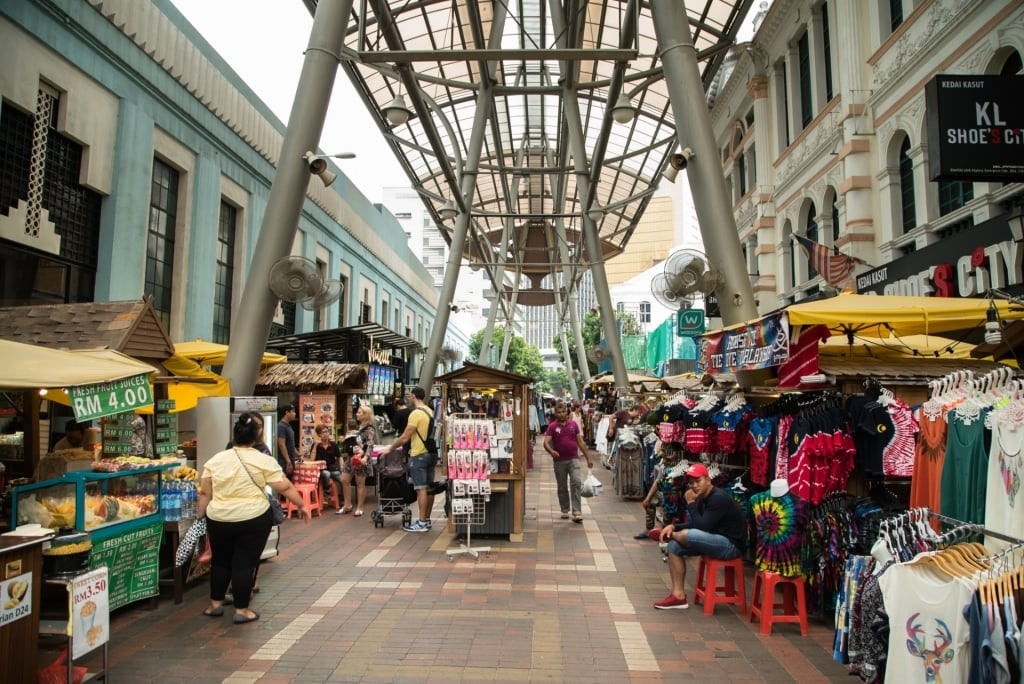
Kuala Lumpur
Discover the Malaysian capital’s superb cuisine on a cruise to Southeast Asia. Browse our upcoming cruises to Kuala Lumpur and book your next voyage today.
